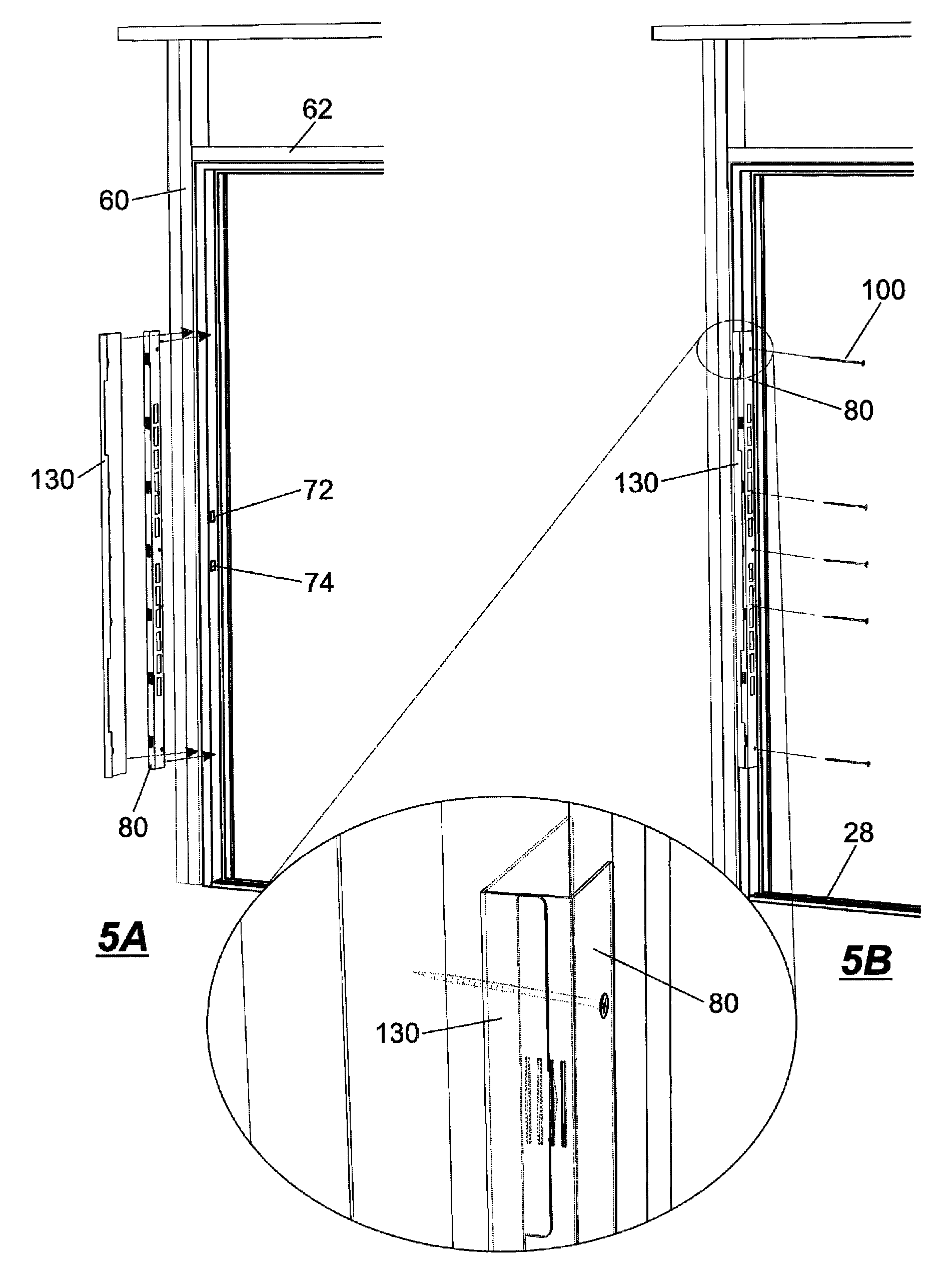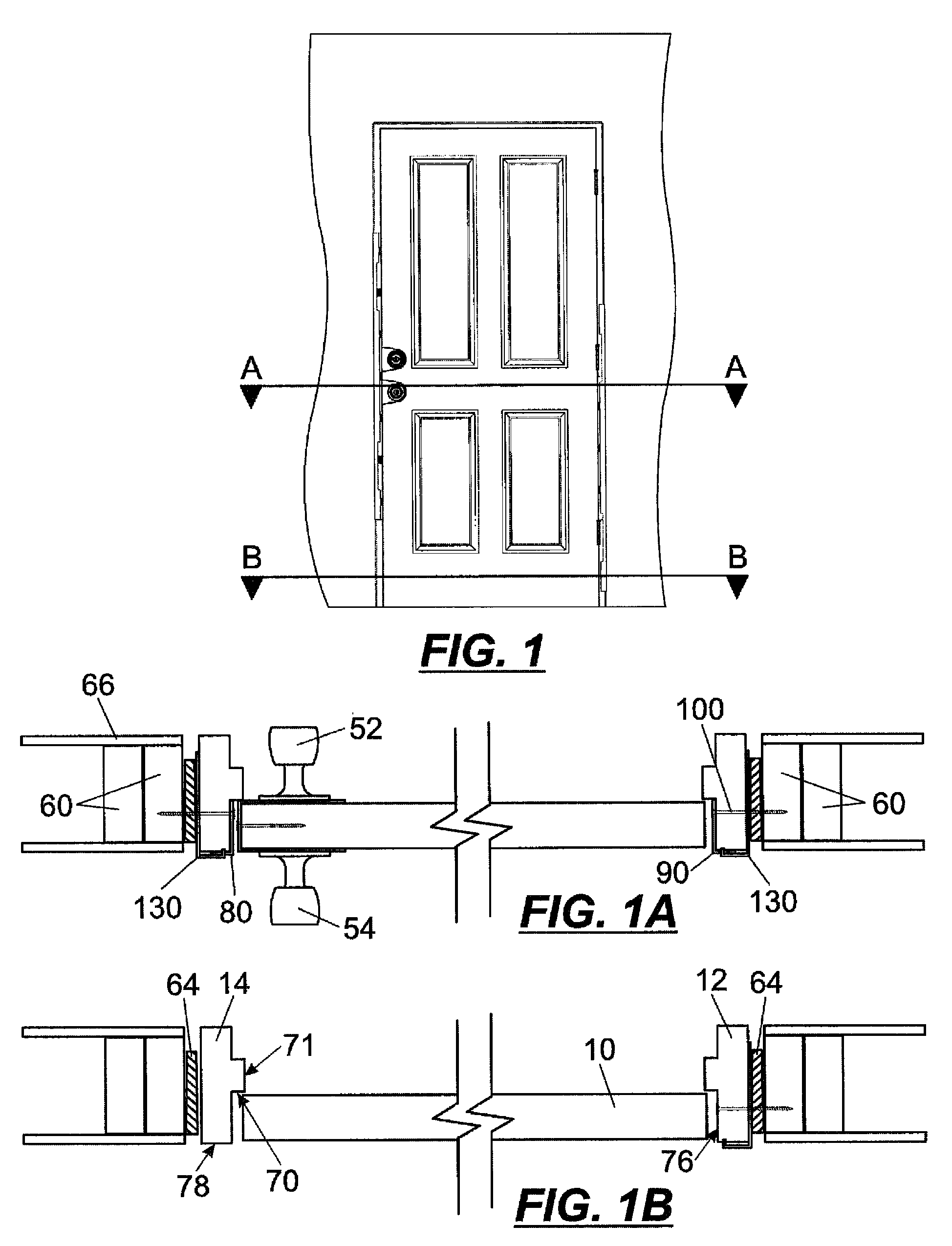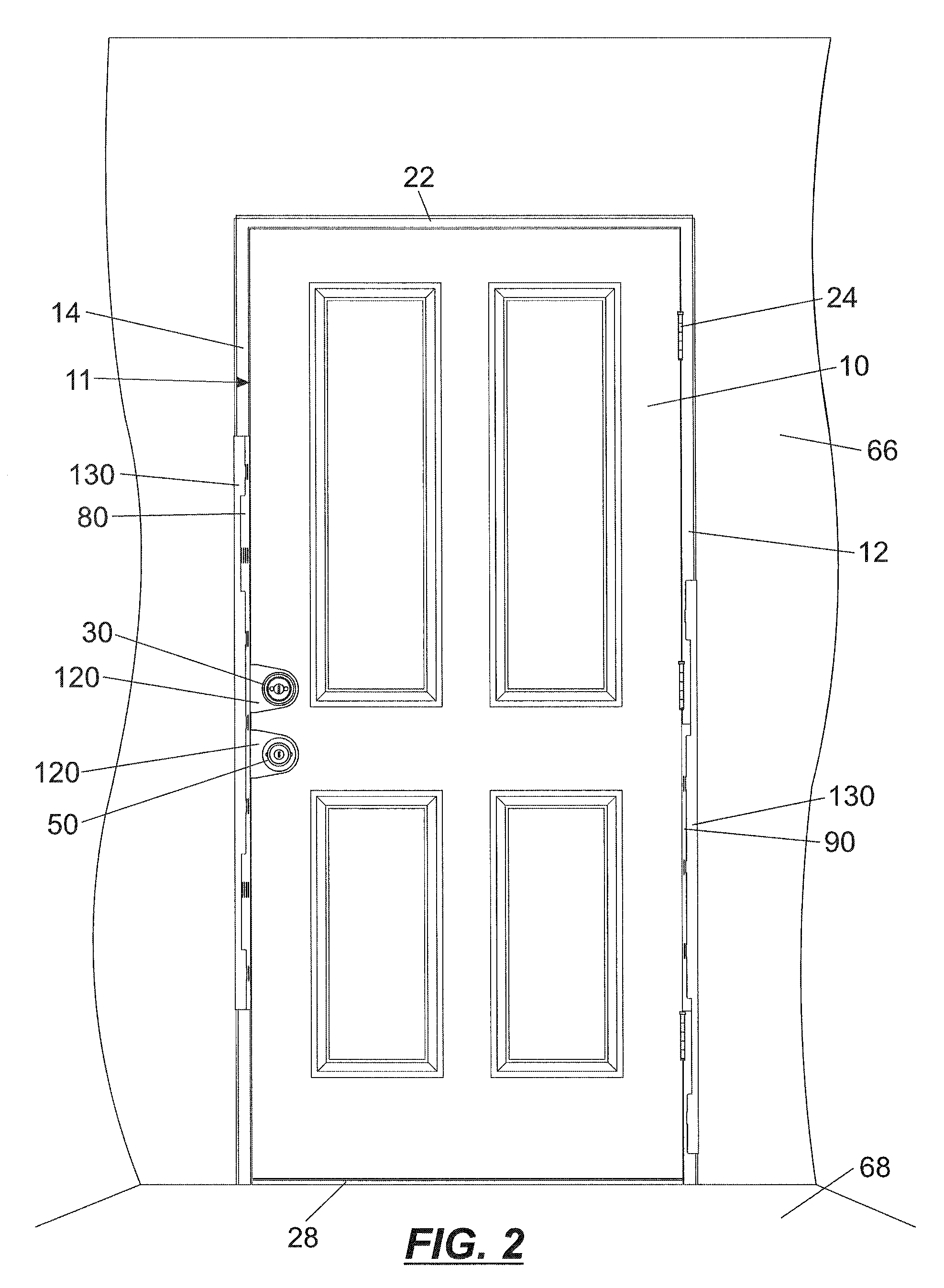System and method for adjustable repair and reinforcement of non-standard doors and jambs
a door and jamb technology, applied in the field of adjustable door security system, can solve the problems of general visibility of system components, and achieve the effects of enhancing structural integrity, enhancing strength, and enhancing structural integrity of entry door assembly
- Summary
- Abstract
- Description
- Claims
- Application Information
AI Technical Summary
Benefits of technology
Problems solved by technology
Method used
Image
Examples
Embodiment Construction
[0043]The present invention now will be described more fully hereinafter with reference to the accompanying drawings, in which embodiments of the invention are shown. This invention may, however, be embodied in many different forms and should not be construed as limited to the embodiments set forth herein; rather, these embodiments are provided so that this disclosure will be thorough and complete, and will fully convey the scope of the invention to those skilled in the art. Like numbers refer to like elements throughout.
[0044]The present invention described and further detailed herein is particularly useful as a security device for the reinforcement of new door assemblies and, because of the ability to be adjustable, is equally suited for the repair of entry door assemblies with non-standard dimensions, while the door assembly remains in place. In place refers to the door assembly as mounted in an existing structure with means having been taken to ensure fixation to the structure i...
PUM
 Login to View More
Login to View More Abstract
Description
Claims
Application Information
 Login to View More
Login to View More - R&D
- Intellectual Property
- Life Sciences
- Materials
- Tech Scout
- Unparalleled Data Quality
- Higher Quality Content
- 60% Fewer Hallucinations
Browse by: Latest US Patents, China's latest patents, Technical Efficacy Thesaurus, Application Domain, Technology Topic, Popular Technical Reports.
© 2025 PatSnap. All rights reserved.Legal|Privacy policy|Modern Slavery Act Transparency Statement|Sitemap|About US| Contact US: help@patsnap.com



